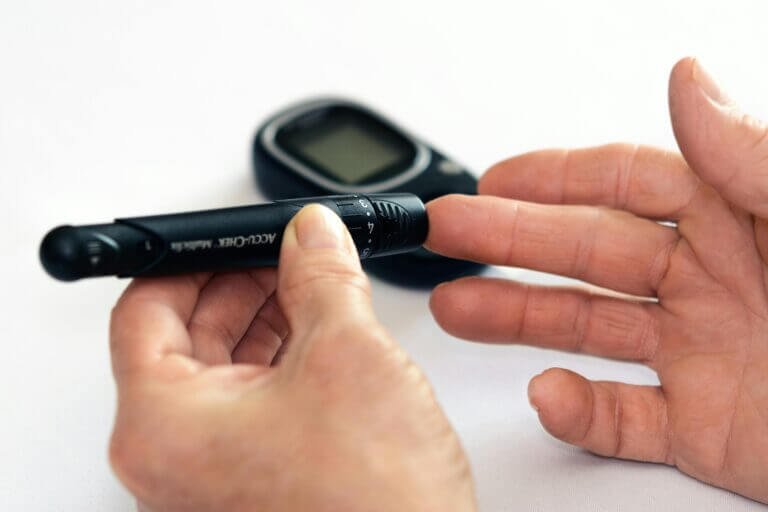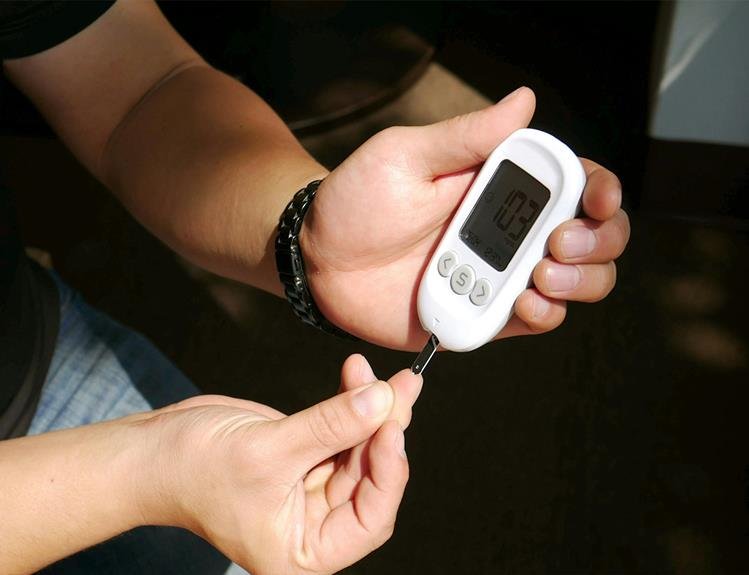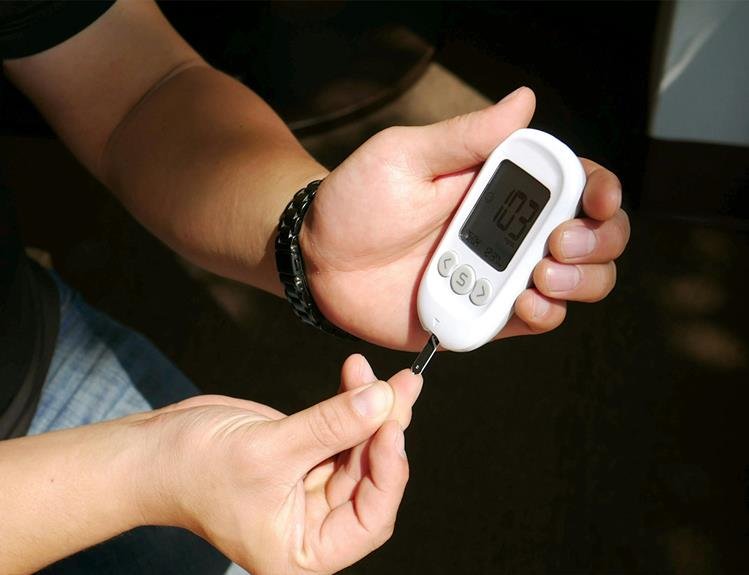Early Warning Signs of Diabetes-Related Amputations You Shouldn't Ignore
If you notice a persistent tingling sensation or numbness in your feet, it could be more than just a passing discomfort. Perhaps you've been experiencing other unusual symptoms that you can't quite explain. These subtle signs could be your body's way of alerting you to a serious issue.
Ignoring these warning signals might lead to irreversible consequences. It's essential to understand the early indicators of diabetes-related amputations so you can take proactive steps to safeguard your health.
Numbness or Tingling Sensations
If you experience numbness or tingling sensations in your extremities, it could be an early warning sign of diabetes-related complications. These sensations, known as peripheral neuropathy, are common in individuals with diabetes and can indicate nerve damage. The high levels of glucose in your blood from uncontrolled diabetes can injure your nerves over time, leading to these uncomfortable feelings.
Ignoring these warning signs can have serious consequences. Nerve damage can progress, causing pain and weakness in the affected areas. In severe cases, it can even lead to foot ulcers, infections, and in the worst scenarios, amputations. Regularly monitoring your blood sugar levels and working closely with your healthcare team to manage your diabetes is crucial in preventing these complications.
If you're experiencing numbness or tingling, don't hesitate to reach out to your healthcare provider. Early detection and intervention can help prevent further nerve damage and improve your overall quality of life. Remember, taking care of your diabetes today can save your limbs tomorrow.
Slow-Healing Wounds
Slow-healing wounds are a common indication of diabetes-related complications that require prompt attention and care to prevent further issues. If you have diabetes, it's crucial to monitor any wounds or sores on your body, especially on your feet, as they can take longer to heal due to poor circulation and nerve damage. High blood sugar levels can impair the body's ability to fight infections and heal wounds effectively, putting you at risk for serious complications like infections that can lead to amputations.
Even small cuts, blisters, or sores that don't seem to be healing as quickly as they should can be a cause for concern. Ignoring these slow-healing wounds can result in them becoming infected, which may require aggressive medical interventions like antibiotics or even amputation in severe cases. Proper wound care, regular monitoring, and seeking medical advice if you notice any delays in healing are essential steps in managing diabetes-related foot complications and preventing serious outcomes.
Skin Changes or Discoloration
Skin changes or discoloration can serve as important visual indicators of potential diabetes-related complications that warrant careful attention and monitoring. If you notice any unusual changes in the color or texture of your skin, especially on your feet and legs, it could be a sign of poor circulation or nerve damage associated with diabetes. Diabetes can affect blood flow and nerve function, leading to skin discoloration, thinning, or shininess. These changes may appear as shiny, smooth, or waxy skin that's either reddish or bluish in color.
Additionally, you might observe dark, velvety patches known as acanthosis nigricans, typically found in body folds like the armpits, neck, or groin.
Regularly inspect your skin for any alterations and bring them to the attention of your healthcare provider promptly. Addressing these changes early can help prevent further complications like ulcers or infections that could potentially lead to amputations. Proper management of blood sugar levels and regular foot care can aid in minimizing these risks.
Persistent Pain or Cramping
Persistent pain or cramping in your legs or feet can indicate nerve damage or poor circulation, which are common complications associated with diabetes. This discomfort may range from mild to severe and can occur during activity or even at rest. If you experience persistent pain or cramping in your lower extremities, it's essential not to ignore these symptoms.
Nerve damage, known as diabetic neuropathy, can lead to a loss of sensation in your legs and feet, making it difficult to notice injuries or infections that could worsen and potentially lead to amputations. Poor circulation, on the other hand, can result in reduced blood flow to your extremities, causing pain and cramping due to inadequate oxygen and nutrient supply to the tissues.
Ignoring persistent pain or cramping in your legs or feet can have serious consequences for individuals with diabetes. Therefore, if you're experiencing these symptoms, it's crucial to seek medical attention promptly to prevent further complications.
Changes in Foot Temperature
Notice any skin color changes, swelling, or redness in your feet?
These could be signs of changes in foot temperature that might indicate circulation problems in diabetes.
Monitoring these visual cues is crucial in detecting issues early to prevent complications like amputations.
Skin Color Changes
If you observe variations in the color of your skin or experience changes in foot temperature, these could be early signs indicating diabetes-related complications.
Skin color changes, such as the skin becoming unusually pale, red, or bluish, may suggest poor blood circulation due to diabetes affecting the blood vessels.
Additionally, fluctuations in foot temperature, with one foot feeling significantly colder or warmer than the other, could signal nerve damage caused by diabetes.
These changes may be subtle at first but are crucial warning signs that shouldn't be ignored. Monitoring these symptoms and seeking medical attention promptly can help prevent further complications associated with diabetes, such as potential amputations.
It's essential to prioritize your foot health and address any concerning changes promptly.
Swelling or Redness
When swelling or redness occurs in your feet, these changes can indicate fluctuations in foot temperature associated with diabetes-related complications. Diabetes can cause nerve damage, leading to poor circulation and reduced ability to sense temperature changes in your feet.
Swelling may result from fluid retention due to kidney problems often seen in diabetic patients. Redness can signal inflammation or infection, especially if accompanied by warmth in the affected area. These symptoms shouldn't be ignored, as they could progress to serious complications like foot ulcers or infections that may ultimately require amputation.
Regular foot exams, proper foot care, and timely medical intervention are crucial in managing these warning signs and preventing severe outcomes.
Swelling or Redness
You may observe swelling or redness in your extremities, which could indicate potential complications related to diabetes. These symptoms are often a sign of poor circulation or nerve damage caused by uncontrolled blood sugar levels. Swelling occurs when fluid builds up in the affected area, usually due to the inability of blood vessels to effectively transport fluids. Redness, on the other hand, may signal inflammation or infection.
If you notice persistent swelling or redness in your legs, feet, hands, or other extremities, it's crucial to seek medical attention promptly. Ignoring these symptoms could lead to serious consequences, such as diabetic foot ulcers, infections, or even the need for amputation. Your healthcare provider can evaluate the underlying cause of the swelling or redness and recommend appropriate treatment to prevent further complications.
Loss of Hair on Limbs
Loss of hair on your limbs can be a subtle yet significant indication of potential diabetes-related complications. While hair loss is a common occurrence due to aging or genetics, when it specifically affects your limbs, particularly the legs, it could signal poor blood circulation. In individuals with diabetes, reduced blood flow to the extremities can lead to nerve damage and poor wound healing, increasing the risk of infections and ultimately amputations.
The lack of hair on your limbs may be accompanied by other symptoms such as numbness, tingling, or a feeling of coldness in the legs and feet. These signs shouldn't be ignored, as they could be early warnings of peripheral arterial disease (PAD) or diabetic neuropathy, both of which are serious conditions that require medical attention. Proper management of diabetes through medication, lifestyle changes, and regular check-ups can help prevent or delay these complications. If you notice significant hair loss on your limbs or experience any related symptoms, consult your healthcare provider promptly to address the issue and prevent further complications.
Frequently Asked Questions
What Are Some Lifestyle Changes That Can Help Prevent Diabetes-Related Amputations?
To prevent diabetes-related amputations, maintain a healthy weight through balanced diet and regular exercise. Monitor blood sugar levels, follow prescribed treatments, and attend medical check-ups. Avoid smoking and manage foot care to prevent complications. Stay proactive for a healthier lifestyle.
Are There Any Specific Exercises or Stretches That Can Improve Circulation in the Limbs and Reduce the Risk of Amputations?
Imagine a healthier you. Walking, cycling, and swimming can boost limb circulation. Simple stretches like calf raises and leg lifts can help too. Stay active, improve blood flow, and reduce amputation risks. Your choice matters.
How Often Should Individuals With Diabetes Check Their Feet for Signs of Potential Amputation Risks?
Check your feet daily for any signs of potential amputation risks. This vital routine ensures early detection of issues and prompt medical attention. Immediate action can prevent complications and protect your limbs from serious consequences.
Are There Any Advanced Medical Treatments or Technologies Available to Help Prevent Amputations in Diabetic Patients?
You can explore advanced medical treatments and technologies to prevent amputations in diabetic patients. From innovative surgeries to cutting-edge prosthetics, these options offer hope and improved quality of life. Stay informed and discuss with your healthcare team.
How Can Family Members or Caregivers Support a Loved One With Diabetes in Monitoring and Addressing Early Warning Signs of Potential Amputations?
To support a loved one with diabetes in monitoring and addressing early warning signs of potential amputations, encourage open communication, help with daily foot inspections, assist in scheduling regular check-ups, and promote a healthy lifestyle together.
Conclusion
In conclusion, paying attention to warning signs like numbness, slow-healing wounds, skin changes, pain, temperature changes, swelling, and hair loss can help prevent diabetes-related amputations. Ignoring these signs can lead to serious complications and irreversible damage.
Stay vigilant, take care of your feet, and seek medical attention if you notice any of these symptoms. Your health and well-being are worth the extra attention and care.






